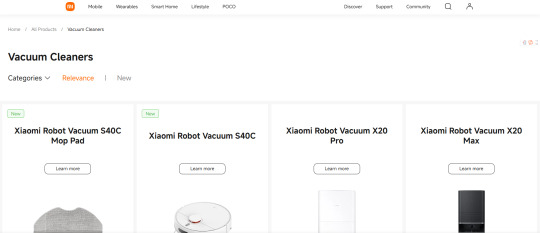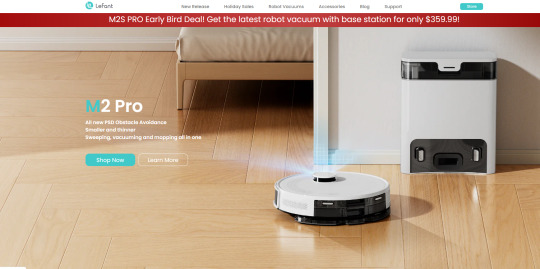#Smart Clean Robot Market
Explore tagged Tumblr posts
Text

This is dumb but I kept thinking as I was sketching stan that these two are literally this meme and you all don't know how tempted I have been
Now all I think about is stan making an ad about something going like " Nothing matters anyway life sucks buy the smart cleaning robot! No it's not smart because it cleans but it makes pathetic noises when you hit it. And look at it its like a sad ugly dog perfect for your sad loser life ! Become a parent now you have nothing else to spend your money on anyway. On the market only for 69.99 not including sales tax . And the best part ? You cannot refund it dad!!" and Bill possessing Ford while Ford is still awake or some shit and forcing him to watch telemarketing at 2 in the morning when these ads keep playing like a form of mental torture
Ford buys a roomba that's it that's the post .
#idk what I'm thinking either but#Stan seeing Ford's name in the buyers list and passive aggressively sending him an even bustier roomba with stupid googly eyes#Dumb post but 👀#gravity falls#gravity falls ford#stanford pines#stan pines#grunkles stan#bill cypher mention woah#bill cypher#gravity falls au#And yes stan does have one for personal use where he has drawn a crude moustache and six fingers on
37 notes
·
View notes
Text
In the human sector of the Milky Federation, if you can't afford the Rand Conglomerate's robots, you might have to go with another cheaper option.
For example, Cyclo Robotics. They may not have the best in the market, but their products are afforable, durable and easily fixable and modifiable.

Here's a bunch of examples.
The green eyed little one is a walking security system. They accidentally made them smart enough to be considered a person with rights under the MF's law, so they are no longer manufactured.
The blue eyed one is a simple cleaning unit. (Aia's head is made of off this model).
The big orange eyed one is a strong robot that acts as a draft "animal" by many workers.
The little red eyed one is a security camera. They walk around to spot any intruders.
Orange and red eye are very old designs of mine I'm still very proud of. I think these are all good designs but man do I have 0 idea of geometry and perspective.
#science fiction#character design#original character#robot oc#robot#robot art#robots#robot design#milkyfederation
28 notes
·
View notes
Text
[cracks back]
so @artastic-friend gave me some ideas

Since Music Man is canonically not made by Fazbear Entertainment, what if the company that made her made all sorts of other arachnid robots - Music Man being the trendsetter and personifying the entirety of the Arachnida class and having a bunch of other robots representing the other orders? Instead of a pizzeria or an animatronic band like Fazbear, instead they come from a robotics company that does have a restaurant but it's much less marketed for children and is a more adult-friendly place and has a bar and stuff. I got most of my inspo from Shinjuku's Robot Restaurant, partially because of the doctored screenshot that DJMM comes from japan but also because this looks dope and fits the rave vibe that DJMM portrays


The robots do serve the purpose enterainment but they do have a practical purposes like cleaning, bartending, cooking, construction and transport, security, providing medical help and even hunting down pests like rats and roaches. The showcases are not just for entertainment but are also showcases for potential buyers, as all the robots are on auction, but they are all extremely expensive at the moment on account of their versatility, size, and intelligence, as the animatronics, after showcases, actually freely roam the restaurant and directly talk to people and are general party hosts.
DJMM is obvi Aranae, but in the lore for this I imagine he not only has the most resemblance to Music Man, but he's also second oldest, which in this case meant he was made before they became extremely valuable, both of these factors leading to him being auctioned to Fazbear Entertainment. The company that created him is currently working on a new DJMM, which has led to him being very resentful, not just because he's replaced but also there's this copy of him that's going to be having the time of his life at a crazy robot rave restaurant everyday. I'd be pissed too if I was still stuck in the Chuck E Cheese That's Famous For Child Murder And Also Killed My Mom💔
I need to draw all 12 extant orders but I do have these 3 - the represantative for Uropygi, the order where vinegaroons are from, who i made cat-themed mostly because of a joke I made that these are the last catboys of spider nation on account of their tail. I don't have a name for the Uropygi bot, though I did have the ideas of Catman and Confetti Cat. I feel like I can do better. He actually takes up the job of DJMM as a janitor and a party host, but as of currently there is still no DJ. Yet.

There is also the representative for Amblypygi, the mime and the "Dazzle King." They feature no speakers anywhere on their body and is completely silent, and both mimes and actually helps with construction projects out of the restaurant!
peep the grabber


And we have Schizomida, or the kinglets/split kings. (the "kings" refer to the "scorpionlike" arachnids and "queens" refer to the "spiderlike" arachnids. therefore DJMM is a qween💅)
In the case of this au(?) the windups were not prototypes but were made with the purpose of being, like, robot pikmin, and Fazbear Entertainment bought all of those guys out, so Spider Robotics (no idea if thats gonna be the name) made the kinglets, who are in much higher quantity but have devolved in quality, as there are mainly so many of them because they keep breaking and are not very smart. They provide surveillance, alert staff of any emergencies or any information that needs to be known, and... also hunt down and kill pests. No mousetraps, they send a horde of Kinglets on mice. It's brutal.

also there will be a Bighand redesign soon, the idea for which provided by @artastic-friend. I wanted to draw it but i didn't have time but stay tuned 😈
46 notes
·
View notes
Text
The Hidden Cost of Convenience: How Your Smart Devices Are Mapping Your Life

In an era where smart devices have become ubiquitous in our homes, a disturbing reality lurks beneath their convenient features. Is that robot vacuum diligently cleaning your floors? It's creating detailed 3D maps of your home. The biometric scanner at your local grocery store? It's collecting more than just payment data. These revelations come from data privacy experts Aram Senriq and Jesse Gilbert, authors of "The Secret Life of Data," who warn that our digital footprints are far more extensive – and permanent – than most people realize. "Data isn't really an object so much as it's a frame of mind," explains Senriq. "You can take any aspect of the human experience and reduce it to a set of numbers that has value for somebody somewhere." Take Amazon's Roomba, for instance. While marketed as a simple vacuum cleaner, its LIDAR sensors create comprehensive 3D maps of your home's interior, tracking everything from furniture placement to the number of residents and pets. According to Gilbert, this data has value far beyond improving cleaning efficiency. "The vacuuming function is why we invite them into our homes, but it's not the value for Amazon," he notes. This detailed spatial data helps build sophisticated consumer profiles that can be packaged and sold to third parties – or potentially accessed by government agencies without a warrant. The implications extend beyond individual privacy concerns. Amazon's acquisition of One Medical and its collection of biometric data through Whole Foods' palm-scanning payment system creates an unprecedented intersection of consumer behavior and health data. "Correlating your shopping habits with your medical risk factors... are very consequential and very high stakes," Gilbert warns. Even more troubling is how today's innocent data collection could have tomorrow's unforeseen consequences. The authors point to a stark example: during the decades when abortion was legal nationwide, millions of Americans used Google Maps to locate healthcare clinics. Post-Roe v. Wade, that same location data could potentially be used as evidence in criminal proceedings in states where abortion is now illegal. So what can consumers do? While completely opting out of digital services isn't realistic for most people, the authors suggest a three-pronged approach: - Support federal data privacy legislation - Take practical steps like using VPNs to encrypt personal data - Foster a culture of privacy awareness and normalized protective behaviors The message is clear: We need to move beyond the "nothing to hide" mindset and recognize that all data, like DNA, exists as part of an interconnected web that can reveal far more about us—and those connected to us—than we might imagine. As our homes and lives become increasingly connected, the question isn't just about what data we're willing to share today, but how that data might be used tomorrow. The convenience of smart devices comes with a price tag we're only beginning to understand. Read the full article
2 notes
·
View notes
Text
An Overview of UK Home Small Domestic Appliances Market: Trends and Insights
The UK home small domestic appliances (SDA) market has seen significant growth driven by evolving consumer lifestyles, technological innovations, and a growing focus on energy efficiency and sustainability. From kettles and toasters to handheld vacuums and smart kitchen gadgets, SDAs are becoming indispensable in UK households.

Buy the Full Report for More Category Insights into the UK Home Small Domestic Appliances Market
Download a Free Sample Report
Here’s an analysis of the key trends and insights shaping the market in 2024.
1. Market Size and Growth
The SDA market in the UK is expected to grow at a CAGR of 4-6% from 2023 to 2028, driven by post-pandemic shifts in home-based lifestyles.
Rising disposable income and increasing interest in premium and smart appliances are fueling demand.
2. Key Consumer Trends
a. Smart and Connected Appliances
Voice control integration (via Alexa, Google Assistant) and IoT-enabled SDAs are gaining traction.
Popular products: Smart kettles, Wi-Fi-enabled coffee makers, and robotic vacuum cleaners.
b. Health and Wellness Focus
Growing interest in air fryers, blenders, and juicers as consumers focus on healthier lifestyles.
Increased demand for air purifiers and humidifiers due to rising concerns over indoor air quality.
c. Sustainability and Energy Efficiency
UK consumers are prioritizing eco-friendly appliances with lower energy consumption, such as energy-efficient kettles and low-wattage irons.
Brands offering repairable and recyclable products are seeing stronger loyalty.
d. Compact and Space-Saving Designs
Urban living and smaller households drive demand for multi-functional and compact SDAs, such as 2-in-1 steamers or combination microwaves.
3. Product-Specific Insights
Kitchen Appliances
Coffee Machines:
Premium brands like Nespresso and De’Longhi dominate, with demand for bean-to-cup and pod-based machines increasing.
Air Fryers:
Brands like Tefal and Ninja lead as air fryers become a household staple.
Consumers prioritize larger capacities and multi-functionality.
Cleaning Appliances
Robotic Vacuum Cleaners:
Growing adoption of smart robotic vacuums from brands like iRobot and Eufy.
Consumers value mapping technologies and self-emptying features.
Handheld Vacuums:
Brands like Dyson continue to dominate the cordless vacuum segment, driven by innovations in battery life and suction power.
Personal Care Appliances
Growth in electric toothbrushes, hair dryers, and grooming kits, driven by brand diversification and targeted marketing.
4. Retail and Distribution Trends
E-commerce Boom:
Online channels like Amazon, Argos, and Currys are witnessing robust growth, fueled by convenience and competitive pricing.
Omni-Channel Experiences:
Retailers are integrating digital and in-store experiences, such as AR demos for products.
Subscription Models:
Brands offering subscription plans for products like coffee machines and vacuum filters are seeing higher customer retention.
5. Competitive Landscape
Key Players
Dyson:
Leader in cordless vacuum and air purifier segments, with a focus on cutting-edge design and functionality.
Ninja:
Dominates the air fryer market and continues to expand into other SDAs like blenders and multi-cookers.
Philips:
Strong presence in personal care and kitchen appliances, with a growing focus on energy efficiency.
Breville:
Known for kettles, toasters, and sandwich makers, with a strong mid-market appeal.
Market Share Dynamics
Premium brands like Dyson and Nespresso dominate the high-end segment.
Mid-range brands (e.g., Tefal, Morphy Richards) maintain steady growth by balancing affordability and quality.
New entrants offering smart or niche eco-friendly solutions are gradually gaining market share.
6. Challenges and Opportunities
Challenges
Economic Pressures:
Inflation and rising energy costs may deter discretionary spending on premium SDAs.
Supply Chain Disruptions:
Component shortages and logistical issues continue to affect manufacturing and delivery timelines.
Opportunities
Sustainability:
Brands investing in energy-efficient and recyclable products are likely to capture eco-conscious consumers.
Customization:
Offering customizable products (e.g., personalized coffee settings or modular vacuum components) can differentiate brands.
7. Future Outlook
Smart Home Integration:
Growth in smart home adoption will drive demand for IoT-enabled SDAs.
Health and Wellness Products:
Continued interest in products supporting healthy lifestyles, such as air purifiers and low-fat cooking appliances.
Sustainability Leadership:
Companies embracing circular economy principles will gain a competitive edge.
The UK small domestic appliances market is poised for steady growth, underpinned by consumer preferences for convenience, sustainability, and technology-driven innovation. Players who align their strategies with these evolving trends will be best positioned to thrive.
2 notes
·
View notes
Text
Household Appliances Market Overview: Growth Factors and Future Trends (2023-2032)

The global demand for Household Appliances was valued at USD 602514.2 million in 2023 and is expected to reach USD 1035351.78 million in 2032, growing at a CAGR of 6.20% between 2024 and 2032.
The household appliances market encompasses a wide range of devices and equipment used for everyday domestic tasks such as cooking, cleaning, and food preservation. This market includes major appliances like refrigerators, washing machines, dishwashers, ovens, and air conditioners, as well as small appliances such as microwaves, vacuum cleaners, coffee makers, and blenders. The growth of this market is driven by factors such as increasing urbanization, rising disposable incomes, and technological advancements that enhance convenience and efficiency.
Consumers are increasingly seeking smart appliances with features like energy efficiency, connectivity, and automation, which allow for better control and monitoring of household tasks. Additionally, the trend towards sustainable living is leading to a higher demand for eco-friendly and energy-efficient appliances. Key players in the market, such as Whirlpool, Samsung, LG, and Electrolux, continually innovate to meet evolving consumer preferences and regulatory standards. The household appliances market is highly competitive and global, with significant growth potential in emerging economies where rising living standards and expanding middle classes are driving demand for modern home conveniences.
Major Household Appliances-
Refrigerators: Used for preserving food by keeping it cold.
Washing Machines: Used for cleaning clothes automatically.
Dishwashers: Used for cleaning dishes and utensils.
Ovens: Used for baking, roasting, and cooking food.
Air Conditioners: Used for cooling and sometimes heating indoor air.
Microwaves: Used for quick cooking, heating, and defrosting food.
Dryers: Used for drying clothes after washing.
Small Appliances-
Vacuum Cleaners: Used for cleaning floors, carpets, and upholstery.
Coffee Makers: Used for brewing coffee.
Blenders: Used for blending, mixing, and pureeing food and drinks.
Toasters and Toaster Ovens: Used for toasting bread and baking small items.
Electric Kettles: Used for boiling water quickly.
Irons: Used for removing wrinkles from clothes.
Food Processors: Used for chopping, slicing, and dicing food.
Kitchen Appliances-
Stoves and Cooktops: Used for cooking food using gas or electricity.
Slow Cookers: Used for cooking food at low temperatures over a long period.
Pressure Cookers: Used for cooking food quickly under high pressure.
Rice Cookers: Used for cooking rice perfectly and sometimes other grains.
Juicers: Used for extracting juice from fruits and vegetables.
Cleaning Appliances-
Steam Mops: Used for deep cleaning floors with steam.
Robotic Vacuum Cleaners: Automated devices used for cleaning floors without manual intervention.
Carpet Cleaners: Used for deep cleaning carpets.
Personal Care Appliances-
Hair Dryers: Used for drying hair quickly.
Electric Shavers: Used for shaving facial or body hair.
Hair Straighteners: Used for straightening hair.
Home Comfort Appliances-
Humidifiers: Used for adding moisture to the air.
Dehumidifiers: Used for removing moisture from the air.
Heaters: Used for providing warmth during cold weather.
Fans: Used for circulating air and providing cooling.
Health and Wellness Appliances-
Air Purifiers: Used for cleaning the air of pollutants and allergens.
Water Purifiers: Used for making drinking water safe and clean.
Electric Massagers: Used for relieving muscle tension and pain.
Household Appliances Market Challenges:
Intense Competition-
Market Saturation: The household appliances market is highly competitive, with numerous established brands and new entrants constantly vying for market share.
Price Wars: Intense competition often leads to price wars, which can erode profit margins for manufacturers and retailers.
Technological Advancements-
Rapid Innovation: The fast pace of technological advancements requires companies to continually invest in research and development to stay relevant and competitive.
Obsolescence: Products can quickly become outdated, forcing companies to regularly update their offerings, which can be costly.
Supply Chain Disruptions-
Global Dependencies: The global nature of the supply chain makes it vulnerable to disruptions caused by geopolitical tensions, natural disasters, and pandemics.
Logistics Issues: Shipping delays and increased transportation costs can impact the timely delivery of products and overall profitability.
Regulatory Compliance-
Environmental Regulations: Increasingly stringent environmental regulations require manufacturers to produce energy-efficient and eco-friendly products, which can increase production costs.
Safety Standards: Adhering to various safety standards across different regions can be complex and expensive.
Sustainability Concerns-
Eco-Friendly Materials: The demand for sustainable and recyclable materials poses a challenge, as they can be more expensive and harder to source.
Waste Management: Managing electronic waste and ensuring proper disposal or recycling of old appliances is a growing concern.
Consumer Expectations-
Quality and Reliability: Consumers expect high-quality, reliable products, and any failure can lead to loss of brand reputation and customer loyalty.
Smart Features: Increasing demand for smart and connected appliances requires significant investment in technology and infrastructure.
Economic Fluctuations-
Recession Impact: Economic downturns can lead to reduced consumer spending on non-essential items, including household appliances.
Currency Fluctuations: Exchange rate volatility can affect the cost of imported components and overall pricing strategies.
Key Players:
Dick GmbH & Co (Germany)
GLOBAL APPLIANCES USA (U.S.)
KAI USA LTD (U.S.)
Kiya corp. (Japan)
A.C. Knife (U.S.)
Messermeister (Germany)
Victorinox AG (Switzerland)
Anker Innovation Technology Co., Ltd. (China)
Samsung Electronics Co., Ltd (South Korea)
Shenzhen Proscenic Technology Co. Ltd. (China)
Neato Robotics, Inc. (U.S.)
Cecotec Innovaciones S.L. (Spain)
G. Electronics Inc (South Korea)
Dyson Limited (U.K.)
Panasonic Corporation (Japan)
Sharp Corporation (U.S.)
More About Report- https://www.credenceresearch.com/report/household-appliances-market
The household appliances market is influenced by a variety of dynamic factors that shape its growth, trends, and competitive landscape. Understanding these dynamics is crucial for market players to navigate the industry effectively. Here are the key dynamics:
Consumer Preferences and Behavior:
Smart and Connected Appliances: There is a growing preference for smart appliances that offer remote control, automation, and connectivity with other smart home devices.
Energy Efficiency: Consumers are increasingly seeking energy-efficient appliances to reduce electricity bills and minimize environmental impact.
Aesthetic and Design: Stylish and aesthetically pleasing designs are becoming important as consumers look for appliances that complement their home decor.
Convenience and Ease of Use: Features that enhance convenience and ease of use, such as touch controls, voice commands, and self-cleaning functions, are highly valued.
Technological Trends:
Internet of Things (IoT): Integration of IoT technology in appliances allows for smart functionality, remote monitoring, and control, leading to improved user experience.
Artificial Intelligence (AI): AI-driven appliances offer advanced features like predictive maintenance, personalized settings, and enhanced performance.
Sustainability Innovations: Development of eco-friendly appliances using sustainable materials and technologies to reduce energy and water consumption.
Competitive Landscape:
Major Players: Dominated by global giants such as Whirlpool, Samsung, LG, Electrolux, and Bosch, which continuously innovate and expand their product portfolios.
Local Brands: In emerging markets, local brands compete effectively by offering cost-effective solutions tailored to regional preferences.
Mergers and Acquisitions: Companies engage in mergers, acquisitions, and strategic partnerships to expand their market presence and technological capabilities.
Regulatory and Environmental Factors:
Energy Regulations: Governments worldwide are implementing stringent energy efficiency standards, compelling manufacturers to produce compliant appliances.
Environmental Policies: Policies promoting the reduction of carbon footprints and the use of eco-friendly materials influence product development and manufacturing processes.
Safety Standards: Compliance with safety regulations is crucial to ensure consumer safety and avoid legal repercussions.
Economic Influences:
Economic Stability: Economic conditions significantly impact consumer spending on household appliances. Economic downturns can lead to reduced demand, while periods of growth boost sales.
Currency Fluctuations: Exchange rate volatility affects the cost of imported components and final product pricing, influencing profitability.
Supply Chain Dynamics:
Global Supply Chain: The globalized supply chain for components and raw materials can be vulnerable to disruptions caused by geopolitical tensions, natural disasters, and pandemics.
Logistics and Distribution: Efficient logistics and distribution networks are essential to ensure timely delivery and availability of products in various markets.
Marketing and Branding:
Brand Loyalty: Strong brand recognition and loyalty play a crucial role in consumer purchasing decisions. Established brands invest heavily in marketing to maintain their market position.
Digital Marketing: The rise of digital marketing, social media, and influencer collaborations enhances brand visibility and consumer engagement.
E-commerce and Retail Trends:
Online Sales Growth: The shift towards online shopping, accelerated by the COVID-19 pandemic, has led to increased sales through e-commerce platforms.
Omni-channel Strategies: Companies are adopting omni-channel retail strategies, integrating online and offline sales channels to provide a seamless shopping experience.
Segmentation:
By Major Appliance Segmentation:
Refrigerators and Freezers
Cooking Ranges and Ovens
Dishwashers
Range Hoods and Ventilation Systems
Food Processors and Blenders
Laundry Appliances:
Washing Machines
Clothes Dryers
Washer-Dryer Combos
Ironing Systems
Water Heaters and Boilers
Air Conditioners and Heaters
Browse the full report – https://www.credenceresearch.com/report/household-appliances-market
Browse Our Blog: https://www.linkedin.com/pulse/household-appliances-market-analysis-global-industry-qqiif
Contact Us:
Phone: +91 6232 49 3207
Email: [email protected]
Website: https://www.credenceresearch.com
2 notes
·
View notes
Note
Have one yourself, weirdo. 6: "You make every day worth living." ScottMarsh.
If there had ever been one constant presence in Brooke’s life, it had been the great crushing pressure of expectations. For as far back as she had memories, she could remember expectations being heaped upon her. At first it had been a challenge, a joy even. She’d learned to read a full year before her classmates. While her classmates were struggling with long division she could answer the questions in no time at all. She was smart, she was clever, and she was capable. It ought to have brought her praise and approval. Instead it only increased what had been expected of her.
Her parent’s dreams, and they were always her parent’s dreams, had ballooned from engineer to doctor, from family musician to concert pianist, and from diligent daughter to future breadwinner and retirement plan. So it was all the way through middle and high school that Brooke did not have a single moment to simply rest. Her days were an endless cavalcade of school, clubs, and after school activities. Piano lessons, taekwondo, and robotics camps. She wasn’t even able to get in much ‘normal’ TV. If it wasn’t educational, honing her mind and her body, it was a waste of her time, according to her parents.
So Brooke had started wasting time everywhere else she could. She didn’t spend lunches hanging out with friends, which quickly meant she had no friends, instead she sat in library’s computer lab. The school’s security was trivial enough to blow through, and from there the world was her oyster. She devoured the video games the computers hardware could handle, which meant mostly games from before the advent of the CD-ROM, and whatever shows and movies she could pirate.
What little life she had turned into retro video games, anime, and classic movies. Her parents scoffed, of course, but as long as her grades stayed high, they barely tolerated it as she shifted her wardrobe and collections of knickknack to reflect her new interests.
The pattern had held until she got her acceptance letter to Blackwell Academy. For the first time in a long time, she had been able to breath easy. She would have space, she could pick and choose what to do, she didn’t have to constantly cram every free second of time she had with crap. She could watch movies, play video games, make friends and go out with them, maybe even find a boyfriend.
Things would have gone to plan, if it hadn’t been for one mousy wallflower of a photographer.
Warren had seemed like a dream match. He was, to be blunt, a total nerd, sweet, and into all the same shit that Brooke was. After their first conversation she’d decided that she wanted to date him, because she felt like it was a good idea, but he seemed to only have eyes for the cute, doe eyed girl who still carried around a polaroid camera in the year 2013. At first, Brooke had thought she had been irritated that this Max Caulfield was standing between her and her potential man. But Max seemed to only want Warren has a friend, if that, and before November she was dating some blue haired punk girl, and said punk’s aspiring actress of a girlfriend.
It should have made her happy, her competition had been cleaned out in one fell swoop and she hadn’t had to lift a finger. Warren was firmly on the market, and even started showing interest in her.
But that grinding annoyance still tugged at her. Every time she saw Max with her precious little girlfriends going about their precious little dates and having the time of their lives she felt like she had bathed in poison ivy.
It had taken until after the holidays, and an attempt at second base from Warren, for the reality to sink in.
She hadn’t liked Warren, she never really had. She had liked the idea of him, and how her parents would have reacted to him. He was smart, he was probably going places. No, she had been crushing on Max. That, and she was jealous that Max got to like girls. As far as Brooke’s parents had been concerned, being gay was something White people did. In her family, she was expected to get over whatever her personal feelings might have been, marry some good man for the good of the family, have a good career, and give them good grandchildren.
As it had turned out, she wasn’t the only person with that burden placed upon her.
Kate Marsh had been the last person Brooke had ever expected to be anything other than straight. She wore a cross like a life jacket, she ran an interfaith and abstinence club. She had a picture of Jesus up on the wall of her dorm for fuck’s sake.
But when Brooke had her melt down over it, Kate had been the one to find her sobbing on the roof in the cold December air. She’d confessed to the same things that Brooke had been feeling. Her own feelings for the pretty freckled girl, her jealousy at Max being able to love freely, and the weight of her own parent’s expectations.
Hearing that, just knowing that she wasn’t alone, broke something in Brooke. By the time January rolled into February her and Kate were dating, in secret of course. Those first few months had been the happiest of her young life.
Kate didn’t expect greatness from Brooke, she didn’t expect her to achieve the best marks, to go to an ivy league college, or to make boatloads of money. All she expected from Brooke was for her to be herself. For the first time in a long time, she’d known a semblance of peace.
It hadn’t lasted, they were already bound for separate colleges on other sides of the continent from each other and that couldn’t be changed, so they had made a promise to each other that they should see other people in college, and if they were still single and wanted to after, they could try to make something permanent.
That had been fifteen years ago. Now Brooke had a gold ring around her finger and her last name had a hyphen and a ‘marsh’ appended to the end of it.
And Kate still held the same freeing lack of expectations, even if Brooke had done all those things anyways. They both had, to an extent. Dr. Kate Beverly Marsh-Scott was certainly a mouthful, but Brooke relished saying it. That and she lived for the the looks on people’s faces when Kate had to patiently explain to them that yes, she was in fact Dr. Marsh-Scott, and that Brooke Scott-Marsh was in fact her wife. The speed at which feet were inserted into mouths would have broken the sound barrier, were it possible.
“What’re you smiling about, my love?” Kate gently asked, a feather-light hand touching on Brooke’s forearm as she stood next to her in the kitchen.
“I was just thinking,” Brooke turned to face her beautiful wife, who smiled at her. Those gentle hazel eyes that she could get lost in all day shimmered in the light, “About us. How we got here.”
Kate’s smile brightened as she stepped closer, her other hand moving up to cup Brooke’s cheek before she planted a gentle kiss on her lips. “Those sound like some good thoughts. Any you’d like to share?”
Brooke made a humming noise in the back of her throat, like she wasn’t quite sure if she wanted to share it before grinning and giving Kate a kiss of her own. “Just about how you make life worth living.”
#Brooke Scott#Kate Marsh#BrookeKate#The other MarshScott#The good one#life is strange#prompt fic#fanfiction#Clearing out more old prompts
18 notes
·
View notes
Text
Ngcgpt-Wb3 intelligent robot
Ngcgpt-Wb3 intelligent quantitative trading is an efficient and systematic trading method that uses complex mathematical models and big data analysis to discover market opportunities and achieve profits. Although quantitative trading has the advantages of high efficiency and objectivity, always pay attention to changes in models and markets. Provide investors with a powerful intelligent robot to increase their investment returns.
Ngcgpt-Wb3 The basis of intelligent quantitative trading
The core of intelligent quantitative trading lies in establishing reliable and efficient mathematical models. These models are able to analyze large amounts of historical and real-time data, including virtual currency prices, market indexes, macroeconomic indicators, etc., to identify market trends and potential trading opportunities.
Data analysis and processing: The first step in intelligent quantitative trading is to collect and process data. This includes obtaining historical and real-time data from global financial markets and making it suitable for model analysis through data cleaning, normalization and other processing steps.
Model building: Build models through intelligent robots. Used to predict market movements or identify trading opportunities.
Strategy development: Automatically develop specific trading strategies based on the intelligent robot model. These strategies decide when to buy or sell an asset based on signals provided by the model.
Ngcgpt-Wb3 advantages:
High efficiency: Quantitative trading can quickly analyze large amounts of data and make trading decisions quickly.
Strong objectivity: Based on mathematical models and algorithms, it reduces the impact of human emotions and biases.
Scalability: Once established, smart quantitative strategies can be applied to virtual markets on different platforms.

2 notes
·
View notes
Text
How AI: Empower Financial Decision-Making
Picture this: you find yourself standing at a crossroads, surrounded by a whirlwind of financial choices that will shape your future. In this vast maze of options, wouldn’t it be extraordinary to have a trustworthy companion by your side? Enter the world of Artificial Intelligence (AI), a marvel that transcends imagination. With its uncanny ability to process information at lightning speed and unravel complex patterns, AI: Empower Financial Decision-Making.
In this blog, we will explore the ways in which AI: Empower Financial Decision-Making, helping you achieve better outcomes and secure your financial future.
Automating Data Analysis and Pattern Recognition
Let me tell you something hilarious about AI: Empower Financial Decision-Making. It’s like having a superhero on your team who can process tons of data in a snap. Traditional financial analysis methods are like slow turtles, taking forever to gather and analyze data. But with AI, you can access and interpret crucial financial information with ease, like a boss! Thanks to machine learning algorithms, AI can even detect patterns and trends in data, so you can identify investment opportunities, avoid risks, and make well-informed decisions based on comprehensive analyses. It’s like having a financial sidekick who always has your back!
Enhanced Risk Assessment and Management
Alright, let me spill some beans about the finance world. When it comes to making smart investment choices, assessing risks is key. But, fear not my friend, because AI is here to save the day! With its fancy algorithms and data-crunching skills, AI can help you make informed financial decisions by analyzing historical data, market trends, and real-time information. By doing so, it can point out potential risks associated with investments, loans, and other financial decisions. This means you can develop effective risk management strategies and protect your precious assets and investments. So, let’s give a round of applause to our new financial superhero – AI!
Personalized Financial Advice and Recommendations
So, you’re saying that robots are now giving financial advice? What’s next? Robot accountants? Robot CEOs? Oh wait, we already have those. But seriously, these AI-driven platforms and robo-advisors are pretty impressive. They use fancy algorithms to analyze your financial situation and goals so they can give you personalized advice. It’s like having your very own financial genie, but without all the wish-granting and blue skin. And the best part? These intelligent systems can save you time and help you make sound financial decisions based on your unique circumstances. Plus, who doesn’t love the idea of a robot managing their money? It’s like having a personal Wall-E, but instead of cleaning up trash, it’s cleaning up your finances.
Fraud Detection and Prevention
We all know financial fraud is a total buzzkill in our digital world. But fear not, my dear friends, AI is here to save the day! Yup, you heard me right. By using machine learning algorithms, AI can sift through tons of financial data and spot any fishy patterns or anomalies that could indicate fraud. These AI-powered fraud detection systems can put a big red flag on suspicious transactions and detect any unauthorized access to your accounts. And the best part? They’ll notify you right away of any potential threats. So, let’s give a round of applause to AI for keeping our financial security on lock and preventing any sneaky fraudsters from ruining our day!
Automated Trading and Portfolio Management
Are you tired of staring at charts and market trends all day? Well, AI has got your back! With automated trading and portfolio management, you can sit back and relax while the machines do the heavy lifting. These algorithms can analyze all sorts of data, from the latest news to historical trends, and make real-time investment decisions. Plus, they can execute trades and optimize investment strategies based on predefined parameters and market conditions. So, why not give your fingers a break and let AI do the trading for you? Who knows, maybe you’ll even end up with a bigger return on your investment!
Forecasting and Predictive Analytics
Need some help making some serious bank? Well, have no fear, because AI is here! With its mad skills in analysis, predictive analytics, and forecasting, AI can guide your financial decisions to the top. It’ll take a look at all the historical data, market trends, and external factors so you don’t have to, and give you the inside scoop on stock prices, market trends, economic indicators, and more. Trust in AI to give you that data-driven perspective needed to make the right investment choices and avoid any potential risks. So sit back, relax, and let AI make it rain!
Conclusion:
AI is like a superhero in the world of finance. It can analyze data faster than a speeding bullet, assess risks better than a seasoned detective, give.personalized advice like a wise old sage, catch fraudsters like a superhero catching villains, trade stocks like a Wall Street pro, and make predictions like a fortune teller. It’s basically a financial genius that can help us make smart choices and navigate the confusing world of money like a boss. But, let’s not forget that even superheroes have their limitations and ethical considerations. AI can have biases like a grumpy grandpa and we need to implement it responsibly like a parent teaching their child to be a good human being. As AI continues to evolve, it has the potential to transform the way we handle our finances and help us reach our financial goals like a superhero saving the day. So, let’s embrace this financial superhero and secure a brighter future!
4 notes
·
View notes
Text
Dreame Z1 Pro robotic pool cleaner review: Rocky start but a happy ending
At a glance Expert’s Rating Pros Easy to clean Solid battery life, with an amazing magnetic charger Perhaps the best mobile app on the market Cons Remote is awkward, slow, and difficult to use Required a major firmware update to clean effectively Very, very slow Our Verdict With pool-mapping capabilities and other smart features, the Dreame Z1 Pro is one of the most intelligent robots I’ve…
0 notes
Text
Top 10 Cleaning Robot Manufacturers in China
Cleaning Robots refer to autonomous devices specifically engineered to maintain floor surfaces through automated vacuuming and
mopping functions. These intelligent machines utilize cutting-edge technologies including LIDAR navigation, AI-powered path planning,
and smart suction systems to deliver thorough, hands-free cleaning. The core purpose of these robots is to provide a safer, more convenient,
and time-efficient solution for home and commercial cleaning, particularly in large spaces or hard-to-reach areas. China has emerged as
the global manufacturing center for robotic cleaning technology, housing numerous specialized manufacturers recognized for their innovative
designs, superior quality, and continuous technological advancements.
In this definitive industry guide, we will examine the top 10 floor cleaning robot manufacturers in China. You'll gain detailed insights into each
company's background, technological capabilities, product advantages, market positioning, and ideal use cases - all from the perspective of
an industry insider with over a decade of manufacturing experience. Whether you're a wholesaler, private label brand, or commercial buyer,
this guide will help you identify the perfect manufacturing partner for your specific business needs.
Brand
Strengths
Best For
1: LINCINCO
Premier OEM/ODM Specialist
OEM partners, tailored solutions
2: Ecovacs Robotics
Technology Leader
High-end residences and families of technology enthusiasts
3: Roborock
Premium Performance
Hard floor cleaning and quality-oriented users
4: Xiaomi Mijia
Value Leader
Entry-level market, young user group
5: Dreame Technology
Dreame Technology
Demand for technology-innovative products
6: ILIFE Robotics
Specialized Cleaning Solutions Expert
Special floor cleaning requirements
7: Kyvol
Smart Home Integration Leader
Smart home integration scenarios
8: Lefant
Compact Design Specialist
An apartment with low furniture
9: Proscenic
Commercial Cleaning Solutions
The field of commercial cleaning
10: Coredy
Balanced Value Provider
Basic cleaning of rental housing
1. LINCINCO - Premier OEM/ODM Specialist

Headquarters: Dongguan, Guangdong Established: 2018
Factory Area: 50,000㎡
Employee: 635 ( include 65 professionals)
135 sets of molding injection, molding machine 80-1400T.
Production lines: 11 finished product assembly lines, 4.5 finished product lines
Production Capacity:4 million units per year
Product Standard:
GB 4343.1-2009;GB 4706.1-2005;
GB 4706.7-2004;GB 17625.1-2012 Export Markets: 85% of production (North America, Europe, Asia)
Technical Specifications:
Navigation: LIDAR 4.0 + AI Visual (dual system)
Corner Cleaning:Mechanical arm extension,clean the corners
Suction Power: 5000Pa-10000Pa (adjustable)
Battery: 5200mAh lithium (120min runtime)
Noise Level: ≤65dB
Key Advantages:
Deep Customization: 15+ customizable points including:
Housing colors/materials
Voice prompt languages (supports 12 languages)
App interface branding
Cleaning mode presets
Rapid Prototyping: New samples ready in 7-10 days
Quality Assurance: 7 inspection points with <0.5% defect rate
Certifications: CE, FCC, RoHS, ERP, KC, PSE
Market Positioning:
SegmentPrice RangeMOQLead Time
Entry-level
$120-$180
500
25 days
Mid-range
$180-$280
300
30 days
Premium
$280-$400
200
35 days
Recent Development: Launched new AI-powered navigation system in Q1 2024, reducing cleaning time by 25% through optimized path algorithms.
Recommended For: Private label brands, wholesalers needing custom solutions, buyers targeting specific regional markets.
2. Ecovacs Robotics - Technology Leader

Headquarters: Suzhou, Jiangsu Annual Output: 3 million+ units R&D Investment: 8.7% of revenue
Flagship Model: DEEBOT X2 Omni
Navigation: AIVI 3.0 (AI Visual Interpretation)
Suction: 8000Pa (industry-leading)
Features: Auto-empty, auto-mop wash, voice control
Battery: 6400mAh (200min runtime)
Market Reach:
Sold in 60+ countries
1,200+ retail partners worldwide
37% market share in North America (2023)
Strengths: Best-in-class navigation technology, complete product ecosystem Weaknesses: Higher price point, limited customization options Recommended For: Tech-focused buyers, premium market segments
3. Roborock - Premium Performance

Production Base: Beijing Employees: 2,800+ (35% in R&D)
Technology Highlights:
ReactiveAI 2.0: Recognizes 42 object types
Sonic Mopping: 3,000 vibrations/minute
Dock Features: Hot water washing, 3-hour drying
2024 Models Comparison:
ModelSuctionBatteryPriceSpecial Feature
S8 Pro Ultra
5100Pa
5200mAh
$1,599
VibraRise 2.0
Q Revo
5500Pa
5000mAh
$899
Dual Spinning Mops
Dyad Pro
N/A
60min
$499
Wet/Dry Combo
Recent Achievement: Roborock S8 Pro Ultra won 2024 CES Innovation Award Recommended For: High-end residential market, tech enthusiasts
4. Xiaomi Mijia - Value Leader

Parent Company: Xiaomi Ecosystem Manufacturing Partners: 3 contract factories
Product Strategy:
Price Range: $200-$500
Refresh Cycle: 18 months
Smart Home Integration: Mi Home ecosystem
Market Performance:
#1 budget brand in Asia (32% market share)
15 million units sold globally (2023)
4.8/5 average customer rating
Recommended For: Price-sensitive markets, first-time buyers
5. Dreame Technology - Innovation Powerhouse

Owned By: Xiaomi (minority stake) Patents Held: 1,200+
Breakthrough Technologies:
Auto-Empty Station: 60-day capacity
Dual-Rotary Mopping: 180RPM
Cross-Brand Compatibility: Works with 3rd party apps
2024 Expansion:
New D10 series for European market
Partnership with Bosch for motor technology
$200 million R&D center under construction
Recommended For: Innovative retailers, smart home integrators
Comparison Table: Top 5 Manufacturers
ManufacturerStrengthPrice RangeMOQLead TimeBest For
LINCINCO
Customization
$120-$400
200
25-35d
OEM/Private Label
Ecovacs
Technology
$400-$1,500
1,000
45d
Premium Retail
Roborock
Performance
$500-$1,600
800
50d
High-End Market
Xiaomi
Value
$200-$500
5,000
20d
Mass Market
Dreame
Innovation
$300-$800
1,500
30d
Tech Retailers
6. ILIFE Robotics - Specialized Cleaning Solutions Expert

Headquarters: Shenzhen, Guangdong Established: 2007 Annual Production: 2.4 million units
Technical Specifications:
Navigation System: Gyroscopic navigation with anti-drop sensors
Suction Power: 1000-2000Pa (adjustable)
Specialized Models:
V3s Pro: Pet hair specialist with tangle-free rubber brush
A4s: Hard floor expert with triple cleaning system
W400: Wet/dry hybrid for complete floor care
Manufacturing Capabilities:
FacilityAreaProduction LinesDaily Output
Shenzhen
45,000㎡
8
8,000 units
Dongguan
30,000㎡
5
5,000 units
Market Performance:
85% export ratio (North America 60%, Europe 25%)
35% YOY growth in pet specialty models
4.3/5 average Amazon rating across products
Recommended For: Retailers targeting pet owners, hard surface cleaning specialists
7. Kyvol - Smart Home Integration Leader
Headquarters: Nanjing, Jiangsu R&D Team: 150+ engineers Patents Held: 87 (including 12 invention patents)
Smart Connectivity Features:
App Control: Kyvol Home App (iOS/Android)
Voice Control: Amazon Alexa, Google Assistant
Smart Scheduling: AI-powered cleaning planning
Matter Protocol: Full compatibility with smart home ecosystems
Product Line Overview:
SeriesKey FeaturePrice RangeTarget Market
E30
Basic Smart
$199-$249
Entry-level
E31
Matter Support
$279-$329
Smart Homes
P50
AI Camera
$399-$449
Premium
Quality Certifications:
CE, FCC, RoHS
ISO 9001:2015 certified
Google Home official partner
Recommended For: Smart home retailers, tech-focused distributors
8. Lefant - Compact Design Specialist

Factory Location: Zhongshan, Guangdong Production Area: 28,000㎡ Workforce: 800+ employees
Design Innovations:
Ultra-Low Profile: 2.85" height (industry thinnest)
Modular Design: Quick-change components
Quiet Operation: As low as 52dB (library-quiet)
Product Comparison:
ModelHeightNoiseSuctionBattery
M210
2.85"
52dB
2000Pa
2600mAh
M280
3.15"
55dB
2500Pa
3000mAh
M350
3.50"
58dB
3000Pa
3200mAh
Market Position:
#1 in compact robots (32% market share)
90% customer satisfaction rate
18-month product lifecycle
Recommended For: Apartment dwellers, urban retailers, pet owners
9. Proscenic - Commercial Cleaning Solutions

Parent Company: Proscenic Technology Group Established: 1996 Global Offices: 5 countries
Commercial Product Line:
UV Sterilization Series:
Hospital-grade disinfection
99.9% germ elimination rate
50,000 sq.ft daily coverage
Large-Area Series:
6000mAh battery (8h runtime)
5000Pa suction
Fleet management software
Window Cleaning Series:
25kg suction force
IP65 waterproof
200m cable length
Certifications:
ISO 13485 (Medical Devices)
EN 60601-1 (Medical Electrical Equipment)
UL Commercial Grade
Recommended For: Hotel chains, hospital suppliers, facility managers
10. Coredy - Balanced Value Provider

Manufacturing Base: Ningbo, Zhejiang Export Experience: 12 years Main Markets: Europe (60%), North America (30%)
Value Proposition:
Price-Performance Ratio: 30% below major brands
Reliability: <2% return rate
Simplicity: One-button operation
Product Matrix:
SeriesSuctionBatteryNavigationPrice
R300
2000Pa
2600mAh
Random
$199
R500
2500Pa
3000mAh
Gyro
$249
R700
3000Pa
3200mAh
LDS
$299
Production Capacity:
3 fully automated production lines
40,000 units/month capacity
15-day standard lead time
Recommended For: Value-focused retailers, secondary product lines
Detailed Comparison: 6-10 Manufacturers
CriteriaILIFEKyvolLefantProscenicCoredy
Specialization
Pet/Hard Floors
Smart Home
Compact
Commercial
Value
Price Range
$199-$399
$199-$449
$179-$349
$499-$2,999
$199-$299
MOQ
500
300
400
100
500
Lead Time
30d
25d
28d
45d
20d
Customization
Limited
UI Only
Colors
Full OEM
None
Best For
Specialty Retail
Tech Stores
Urban
B2B
Mass Market
How to Choose Your Ideal Manufacturer?
Selection Matrix:
NeedBudgetRecommended Choice
Custom OEM/ODM
Medium
LINCINCO
Cutting-Edge Tech
High
Ecovacs
Premium Performance
High
Roborock
Mass Market Value
Low
Xiaomi
Innovative Features
Medium
Dreame
Pet Hair Solutions
Medium
ILIFE
Smart Home Focus
Medium
Kyvol
Compact Design
Low-Med
Lefant
Commercial Grade
High
Proscenic
Balanced Value
Medium
Coredy
Why LINCINCO Stands Out for Business Buyers?
While all these manufacturers have strengths, LINCINCO offers unique advantages for B2B buyers:
True Customization: Unlike brands focused on their own products, we adapt to your specifications
Flexible MOQs: Starting from 200 units vs. typical 1,000+ minimums
Faster Time-to-Market: 30-day average production cycle vs. industry-standard 45-60 days
Direct Factory Pricing: No brand premium markup
Quality Assurance: Our defect rate is 80% lower than industry average
Recent Client Success: Helped a European retailer launch their private label line with 15 customized models in just 4 months.
Conclusion
China's cleaning robot manufacturers offer unparalleled variety from budget to premium segments. For private label and customized
solutions, LINCINCO provides the ideal combination of quality, flexibility and value. Meanwhile, brands like Ecovacs and Roborock lead
in consumer-facing technology. Your optimal choice depends on target market, technical requirements and business model.
0 notes
Text
Cleaning Robot Market Witnesses Strong Growth with Innovations in Robotics and Smart Connectivity
The cleaning robot market is experiencing dynamic growth, fueled by rapid technological advancements, increased urbanization, and rising consumer demand for convenience. These automated devices, once a novelty, have now evolved into essential household and commercial cleaning solutions. From robotic vacuum cleaners and floor scrubbers to window and pool cleaners, the market has expanded across a variety of applications and industries.

Market Drivers
One of the primary factors driving the cleaning robot market is the increasing awareness and adoption of smart home technologies. Consumers are becoming more tech-savvy and are seeking intelligent appliances that save time and reduce manual effort. Cleaning robots offer a compelling value proposition — they operate autonomously, often via mobile apps, and are equipped with AI-driven navigation, mapping, and scheduling features.
Labor shortages and rising labor costs in commercial sectors are also fueling demand, especially in facilities management, hospitality, and healthcare. These industries benefit from robotic cleaners that can maintain hygiene standards consistently while reducing reliance on human workers.
Furthermore, COVID-19 significantly accelerated the demand for automated cleaning solutions. The pandemic underscored the importance of hygiene and sanitation, leading to the deployment of disinfection robots in hospitals, offices, and public spaces. This shift has had a lasting impact on consumer and institutional preferences for robotic cleaning solutions.
Key Segments
The cleaning robot market can be segmented based on product type, end-user, and region.
By Product Type: Robotic vacuum cleaners dominate the segment due to widespread consumer adoption in residential settings. Floor-cleaning robots, window-cleaning robots, and pool-cleaning robots are also gaining traction.
By End-User: The residential sector leads in adoption, driven by the need for convenient, efficient cleaning solutions. However, the commercial segment is expanding rapidly, with robots being deployed in airports, shopping malls, hospitals, and hotels.
By Region: North America holds a significant market share due to early adoption of smart home technology and high disposable incomes. Europe and Asia-Pacific are also key regions, with the latter showing fast-paced growth driven by urban development and tech adoption in countries like China, Japan, and South Korea.
Technological Advancements
AI, IoT, and machine learning have revolutionized cleaning robots. Modern robots use LIDAR-based mapping, SLAM (Simultaneous Localization and Mapping), and camera vision to navigate complex environments and avoid obstacles. Additionally, integration with voice assistants like Alexa and Google Assistant enhances user convenience.
Battery technology has also improved, enabling longer operational times and faster charging. Moreover, robots now come with self-cleaning and auto-dust disposal features, further reducing human intervention.
Competitive Landscape
Key players in the market include iRobot Corporation, Ecovacs Robotics, Samsung Electronics, Xiaomi Corporation, Dyson Ltd, and LG Electronics. These companies are focused on R&D, product innovation, and strategic partnerships to maintain their market position. Startups are also entering the market with niche and cost-effective solutions, contributing to increased competition.
Mergers, acquisitions, and regional expansions are common strategies among leading manufacturers. For example, iRobot continues to enhance its product capabilities through AI integration, while Xiaomi focuses on affordability and smart connectivity in emerging markets.
Challenges
Despite robust growth, the cleaning robot market faces challenges. High initial costs, especially for advanced commercial models, can deter small businesses or price-sensitive consumers. Maintenance, repair, and operational efficiency in complex environments also pose hurdles. Moreover, privacy concerns around data collection and storage in smart cleaning devices remain a topic of discussion.
Future Outlook
The cleaning robot market is expected to grow significantly in the coming years, with analysts projecting a CAGR of over 15% from 2024 to 2030. As technology becomes more affordable and accessible, adoption rates in both residential and commercial spaces will surge. Moreover, innovations in AI and robotics will continue to push the boundaries of what cleaning robots can achieve.
Integration with smart city infrastructure, enhanced mobility, and autonomous multi-function capabilities are likely to shape the future of the market. Governments and institutions focused on sustainable and automated urban management may also drive demand for eco-friendly and energy-efficient robotic solutions.
0 notes
Text
Surgical Booms Market Overview: Current Trends and Future Outlook
The Surgical Booms Market has become an integral part of modern operating rooms, reflecting the healthcare sector's growing emphasis on efficiency, safety, and technological integration. Surgical booms—ceiling-mounted arms designed to hold medical equipment, lights, gas lines, and electrical outlets—are revolutionizing the way surgical teams interact with critical infrastructure during procedures. This article explores the current trends driving the market, its evolving landscape, and what the future holds for this essential component of hospital design and surgical care.

Current Market Trends
1. Adoption of Modular and Customizable Designs
One of the most prominent trends in the Surgical Booms Market is the increasing preference for modular designs. Hospitals are moving away from one-size-fits-all solutions and opting for booms that can be customized based on surgical specialties, room size, and workflow needs. Modular booms provide greater flexibility and enable healthcare providers to future-proof their operating rooms against technological changes.
2. Integration with Advanced Surgical Technologies
Surgical booms are being designed to accommodate sophisticated technologies like high-definition monitors, endoscopy equipment, and robotic surgery systems. This integration enhances intraoperative visualization and improves surgical precision, particularly in minimally invasive and complex procedures.
3. Focus on Infection Control and Safety
With the heightened focus on hygiene and infection control—especially post-COVID—surgical booms are being designed using antimicrobial coatings and materials that are easy to clean. Additionally, the ergonomic layout provided by ceiling-mounted systems reduces floor clutter, minimizing trip hazards and contamination risks.
4. Growth in Hybrid Operating Rooms
The rise of hybrid operating rooms that combine traditional surgery with advanced imaging capabilities has led to increased demand for versatile surgical booms. These hybrid setups require booms capable of supporting both diagnostic and surgical tools, ensuring seamless coordination between surgical and imaging teams.
Market Drivers
Rising Surgical Volumes: A growing number of surgical procedures globally is a direct catalyst for the demand in the Surgical Booms Market.
Hospital Infrastructure Modernization: Many healthcare systems are investing in upgrading their facilities, which includes equipping ORs with modern booms.
Surge in Minimally Invasive Surgeries: As these surgeries rely heavily on visualization and technology, the role of surgical booms becomes even more significant.
Key Restraints
Despite the growth potential, the market does face several challenges:
High Installation Costs: Surgical booms involve a significant upfront investment, including equipment costs and structural modifications.
Maintenance Complexity: Regular servicing and technical upkeep are essential, which may deter smaller hospitals from widespread adoption.
Regional Trends
North America remains the dominant market due to advanced healthcare infrastructure and a high number of surgical procedures.
Europe is also a significant contributor, especially in countries like Germany, the UK, and France, where healthcare systems emphasize quality and innovation.
Asia-Pacific is emerging rapidly, driven by rising healthcare investments in countries such as China and India.
Latin America and Africa are gradually adopting surgical booms, primarily in private sector hospitals and international-funded healthcare initiatives.
Future Outlook
The future of the Surgical Booms Market looks promising, with several developments likely to shape its trajectory over the next decade:
Smart Booms: Integration with the Internet of Things (IoT) will enable real-time monitoring, predictive maintenance, and data analytics for improved operational efficiency.
AI Compatibility: Booms that support artificial intelligence-driven tools and robotic surgery will become increasingly important.
Green Initiatives: Energy-efficient and sustainable boom systems will gain popularity as hospitals strive for environmental compliance.
Furthermore, the growing demand for telemedicine and remote surgeries may also influence the design and functionality of surgical booms, pushing manufacturers to innovate further.
Conclusion
The Surgical Booms Market is undergoing rapid transformation, driven by technological advancements, changing surgical requirements, and increased investment in healthcare infrastructure. While challenges like high costs remain, the long-term benefits of improved workflow, safety, and adaptability make surgical booms a strategic investment for modern healthcare facilities. As innovation continues to fuel growth, stakeholders—including manufacturers, hospitals, and regulatory bodies—must collaborate to make these systems more accessible and sustainable across the globe.
0 notes
Text
Exploring the Smart Home Revolution with SwitchBot's Roller Mop Robot
Hello everyone! I'm excited to share my thoughts on the innovative products coming from the Smart Home Industry, particularly focusing on SwitchBot and their amazing roller mop robot.
With the rise of smart technology, keeping our homes clean has never been easier. SwitchBot's roller mop robot is a fantastic addition to any smart home setup. This device not only saves time but also ensures that your floors are consistently clean without the hassle of traditional mopping.
Imagine coming home to spotless floors, all thanks to the smart automation of the roller mop robot. Its advanced features allow it to navigate effortlessly around your home, tackling dirt and spills with ease. Plus, the convenience of scheduling cleaning sessions means you can enjoy a clean home without lifting a finger!
SwitchBot is truly leading the way in making our lives more comfortable and efficient. I can't wait to see what other exciting innovations they bring to the market. If you're considering upgrading your cleaning routine, the SwitchBot roller mop robot is definitely worth a look!
What are your experiences with smart home devices? Let's discuss!
0 notes
Text
Strategic Selling Starts Here: B2b Marketplace Success Made Simple

If you've ever tried selling in a B2B marketplace, you know the journey from listing your product to sealing the deal isn't always smooth sailing. It’s not just about uploading a product and waiting for magic to happen—it's about crafting a story, building trust, and making strategic moves that guide buyers confidently to the “buy now” button.
Whether you’re selling industrial components, raw materials, or tech solutions, here’s your honest, human-first guide to taking your B2B sales from “just listed” to “just sold.”
Step 1: Know Your Buyer And Speak Their Language
In the B2B world, your buyer isn’t shopping for fun. They have budgets, deadlines, and stakeholders breathing down their necks. They’re looking for reliability, scalability, and long-term value—not flashy marketing jargon.
Before you even list your product, get crystal clear on:
Who your ideal buyer is
What problems they’re trying to solve
What makes your product the right fit
Use that insight to write a listing that feels more like a conversation than a sales pitch. Clear specs? Yes. But also: real-world benefits, easy-to-digest language, and a tone that says, “We get you.”
Step 2: Make Your Listing Work Harder
Your listing is your digital storefront. If it's dull, disorganized, or vague, buyers will bounce before they even get to the price. Here’s how to make it irresistible:
Photos matter—even in B2B. Use clean, clear images that show the product in context when possible.
Titles should be SEO-smart, but not robotic. Think: “Heavy-Duty Stainless Steel Valves for Industrial Use – 2” Diameter” instead of “Valve #22001.”
Bullet points beat walls of text. Keep things scannable and easy to read.
Certifications, specs, compliance details? Include them. Trust is built on transparency.
Step 3: Use a Marketplace That Works With You
Not all B2B platforms are created equal. You want a portal that does more than just host your listings—you need one that understands the B2B buying cycle and offers tools to streamline and scale.
Take Pipex.ai, for example. It’s not just another listing site. It’s a full-featured B2B portal that helps sellers like you connect with serious buyers, manage orders efficiently, and get real-time insights that can inform smarter selling. When your platform is built with your business goals in mind, everything—from negotiations to logistics—gets easier.
Step 4: Engage, Don’t Ghost
Here’s where many sellers go silent—and it’s a mistake. After a buyer shows interest, your real job begins. Don’t drop the ball.
Respond quickly to questions. Even a “We’ll get back to you shortly” keeps the conversation alive.
Offer solutions, not just answers. If your product isn’t quite right, suggest a related one that might work better.
Be human. You’re not a bot, and neither is your buyer. Build rapport—it still matters in B2B.
Step 5: Close with Confidence (and Follow Up)
Once you’ve negotiated terms and the buyer says “yes,” it’s time to deliver. Literally. Make sure your logistics game is tight and communication stays clear.
After the sale:
Send a thank-you message.
Ask for feedback.
Let them know about other products they might like.
And don’t stop there. Repeat buyers are the backbone of most successful B2B sellers. A quick check-in a month later could turn one deal into an ongoing relationship.
Bonus Tip: Let Data Be Your Co-Pilot
Most modern B2B marketplaces offer analytics—but are you using them? Track what’s getting clicks, what’s converting, and where buyers are dropping off. Platforms like Pipex.ai make it easy to turn raw data into actionable insights.
Maybe it’s time to rewrite that product description. Or maybe you’ll spot a trend in buyer behavior that lets you upsell with confidence. Either way, data isn’t just numbers—it’s the story your buyers are telling you.
Final Thoughts
Selling in a B2B marketplace isn’t about brute force—it’s about thoughtful strategy, buyer empathy, and using the right tools. From listing to sale, every touchpoint is a chance to show your value and build trust.
So go ahead. Polish that listing, follow up like a pro, and partner with a platform that’s got your back. Selling smarter just got a whole lot easier.
0 notes